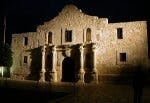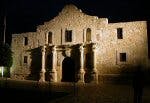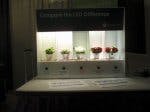New this year was the expansion of the meeting program to include an SSL track, which attracted over 150 of the attendees to the various presentations, including that of Scott Riesebosch of CRS Electronics and myself. Being no stranger to the Energy Star process having participated in the development of the Energy Star criteria for Decorative Light Strings or Holiday Lights employing LED and being an active in the Canadian Energy Star program as an Energy Star Participant, much similar to the SSL Energy Star Partner Program, it was an honour to be asked to prepare a presentation that was given on both days to utilities, energy efficiency program organizations, retailers and manufacturers.
The presentation, entitled, “Understanding LED: An Overview of the Technology and the Market,” covered technology with respect to the questions that everyone should ask manufacturers when reviewing or specifying product or making procurement decisions, as well as the potential for misleading information and untruths in manufacturer representations. The presentation attempted to dispel the myths and discern the truth.
Also making a presentation entitled ”Targeting the Commercial Sector: Engaging Lighting Designers, Specifiers and Purchasers” was lighting designer Avraham Mor from Lightswitch, who also employs a list of criteria and questions that manufacturers must address prior to even having a meeting to discuss their products.
Mor also made a very effective presentation to the SSL track from the lighting designers’ point of view. Specifiers are actually the decision makers for lighting a new or existing commercial building and include architects, property managers and purchasing managers. Reaching this group can be challenging, as specifiers have unique procurement channels, high expectations and a greater awareness of advanced lighting technologies. The session highlighted how to reach them and work with them, get them the information that they need and how to keep their business. Alike the Owen and Riesebosch presentation, the message was similar: “If manufacturers cannot provide adequate product technical information, don’t walk away…run!”
Ruth Gordon gave a very comprehensive review of the Next Generation Luminaires SSL Design Competition in her Engaging Specifiers presentation.
Manufacturer driven education and tools as touched upon at the Energy Star LPM will be the subject of an upcoming feature in LEDs Magazine, where educational literature and tools will be highlighted, along with a preview of the soon to be released Procurement and Specification Guide being developed by greenTbiz and LED City Toronto.
Other presentations and topics included “Energy Star 101: An Introduction for SSL Manufacturers” presented by Derek Greenauer of D&R and “What’s new with Energy Star SSL?: A Review of the Latest DOE Criteria”, including the new Integral LED Lamp Draft Criteria presented by Kelly Gordon of PNNL.
Also, DOE’ Jim Brodrick presented “Beyond Energy Star: Other Commercialization Efforts for SSL” including CALiPER, L-Prize, SSL Quality Advocates (Lighting Facts) and GATEWAY. Brodrick highlighted DOE research, such as the new report regarding the analysis of niche markets (http://apps1.eere.energy.gov/buildings/publications/pdfs/ssl/ nichefinalreport_october2008.pdf), life cycle environmental analysis of SSL and extending CFL lessons learned study to SSL.
SSL Quality Advocates participation now includes 8 manufacturers and 6 buyer companies and organizations. L Prize now has 21 utility and energy efficiency organization partners throughout the US that will support the promotion of winning products.
Of great interest was the presentation entitled “Designing, Marketing and Implementing Effective SSL Programs” which provided guidance to utilities and energy efficiency organizations, highlighting eligible luminaire types, product availability, target market segments, information tools and tactics for enhancing market impact and customer satisfaction. Gabe Arnold from Efficiency Vermont outlined current SSL projects and program incentives and Mike Plunkett from Focus on Energy highlighted efforts and interest in Wisconsin.
On the exhibit floor, were over 30 exhibitors, of which close to half were SSL-related.
In closing, Jim Brodrick reminded attendees to the LED track about upcoming DOE events, such as the upcoming SSL Manufacturing working to be held in Fairfax, Virginia on April 21-22, 2009. Brodrick also mentioned the upcoming SSL Market Introduction Workshop in July, likely to be held in Chicago.
The presentations from the SSL track of the Lighting Partner Meeting can be found at http://www.energystar.gov/index.cfm?c=partners.pt_meetings.
IES Roadway Lighting Committee
The IES Roadway Lighting Committee held its spring meeting in Dallas from March 19-21. The RLC works on development, design and maintenance standards for roadway lighting, updating standards as technology changes and encourages participation into research.
Following the LPM, I attended the Dallas meeting, where I was greeted with questions regarding the Energy Star issue and the recent media coverage, once again highlighting the real industry concerns and confusion as well as how widespread the issue reaches.
IES industry professionals also rely on standards such as Energy Star in their day-to-day practice. Ron Gibbons, the current IES President commented that, as mentioned earlier, both agencies have to take into consideration how the criteria are relevant in the context of the application.
For more information about the IES RLC, contact: Andrew Silbiger, 905-881-9978 or E-mail: [email protected]







